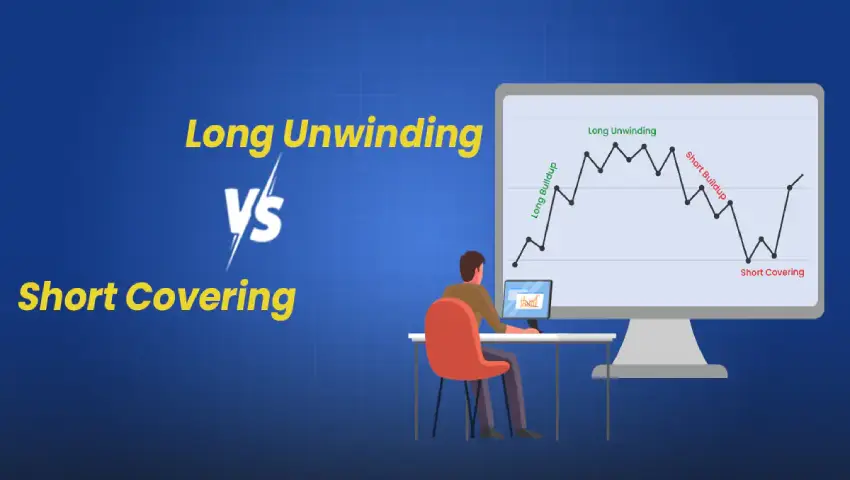
- 24/02/2025
- MyFinanceGyan
- 124 Views
- 4 Likes
- Share Market
Understanding Long Unwinding and Short Covering
Traders and investors often come across terms like Long Unwinding and Short Covering in stock markets. These concepts play a crucial role in price movements and help traders decide their next move.
What is Short Covering?
Short covering happens when traders first sell shares at a high price, expecting the price to fall. When the price drops, they buy back the shares at a lower price to book a profit. This increased buying can push stock prices up.
Sometimes, traders may cover their short positions even if the price does not drop as expected. If the stock starts rising instead of falling, traders quickly buy back shares to prevent further losses. This sudden buying pressure can also lead to a price increase.
What is Long Unwinding?
Long unwinding occurs when traders who bought shares at a low price decide to sell them after a price increase to book profits. When many traders sell their stocks, the supply increases, causing the stock price to fall.
There are different reasons why traders unwind long positions:
- The stock has reached their target price.
- They need funds for other investments.
- Negative market news or economic concerns create panic selling.
Since long unwinding increases the supply of stocks in the market, it can lead to short-term price declines.
Understanding Short Buildup and Long Buildup:
Short Buildup:
Short Buildup: Occurs in derivative markets when traders anticipate a decline in prices.
They sell securities aggressively, increasing the supply.
This selling pressure pushes stock prices lower.
When they buy back at lower prices, it’s called short covering.
Long Buildup:
Happens when traders expect prices to rise.
They buy securities in large quantities, increasing demand.
This demand pushes stock prices higher.
When they sell at higher prices, it’s called long unwinding.
Conclusion:
Long Unwinding and Short Covering are key factors that influence stock prices in the short term. Traders need to understand these concepts to make informed decisions while trading in the stock market.
Disclaimer: This article is for educational purposes only and does not provide financial advice. Always consult a qualified financial advisor before making investment decisions.



